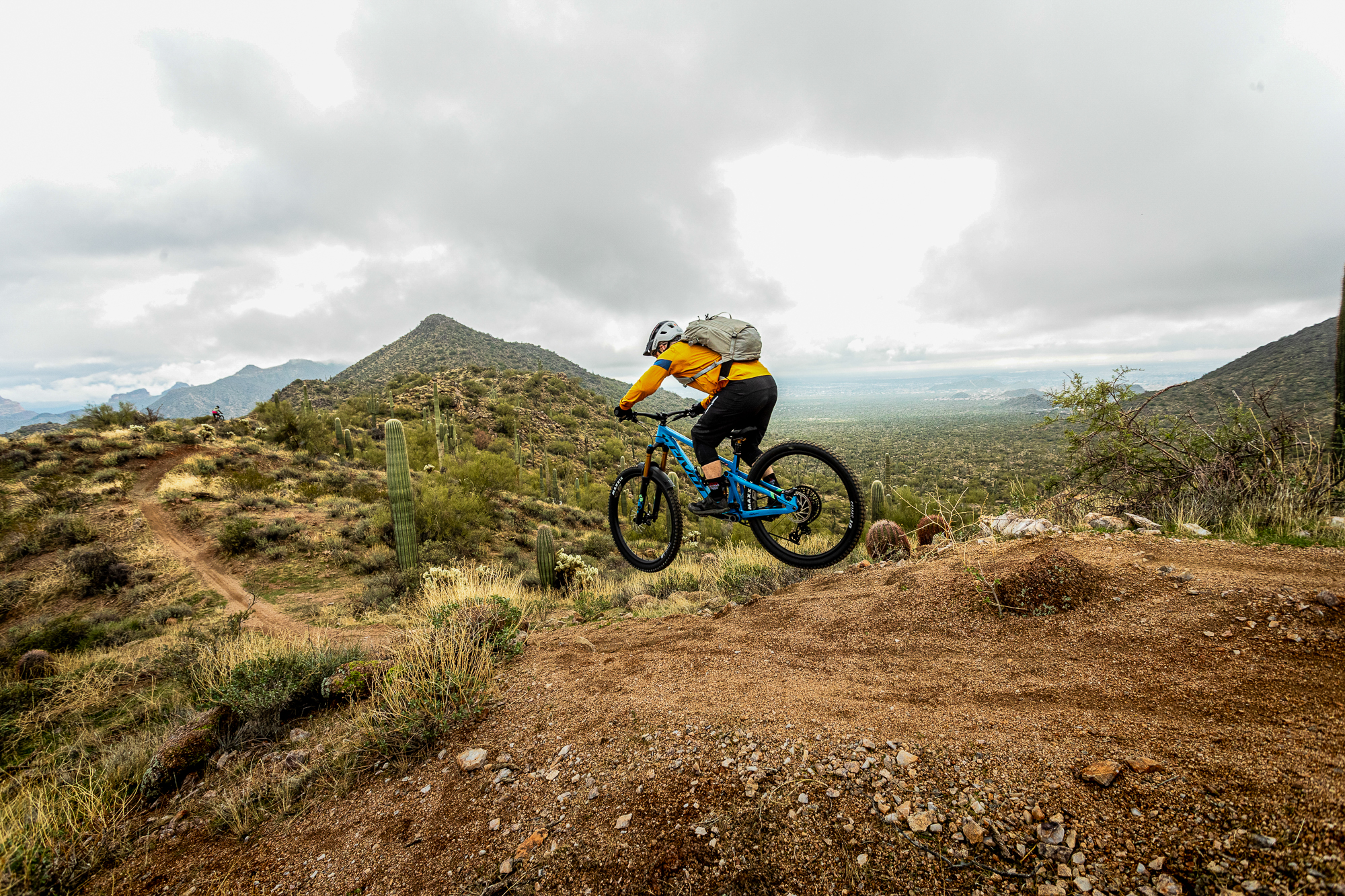Historically, when invited to check out the latest Pivot mountain bike in Tempe, AZ I’ve found myself packing to navigate the intense heat. Which is why this time around, I found it particularly odd to be stressing about what cold and wet weather gear to bring.
By this point, you probably know that Pivot has a new Switchblade. Unsure of what to expect out of a bike that had just relaunched a few years ago, I dumped all my rain gear into a bag and headed off to Phoenix.
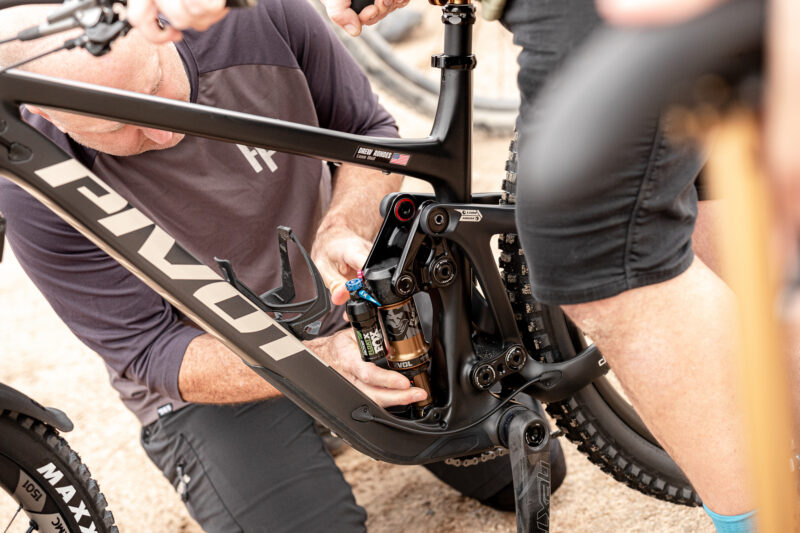
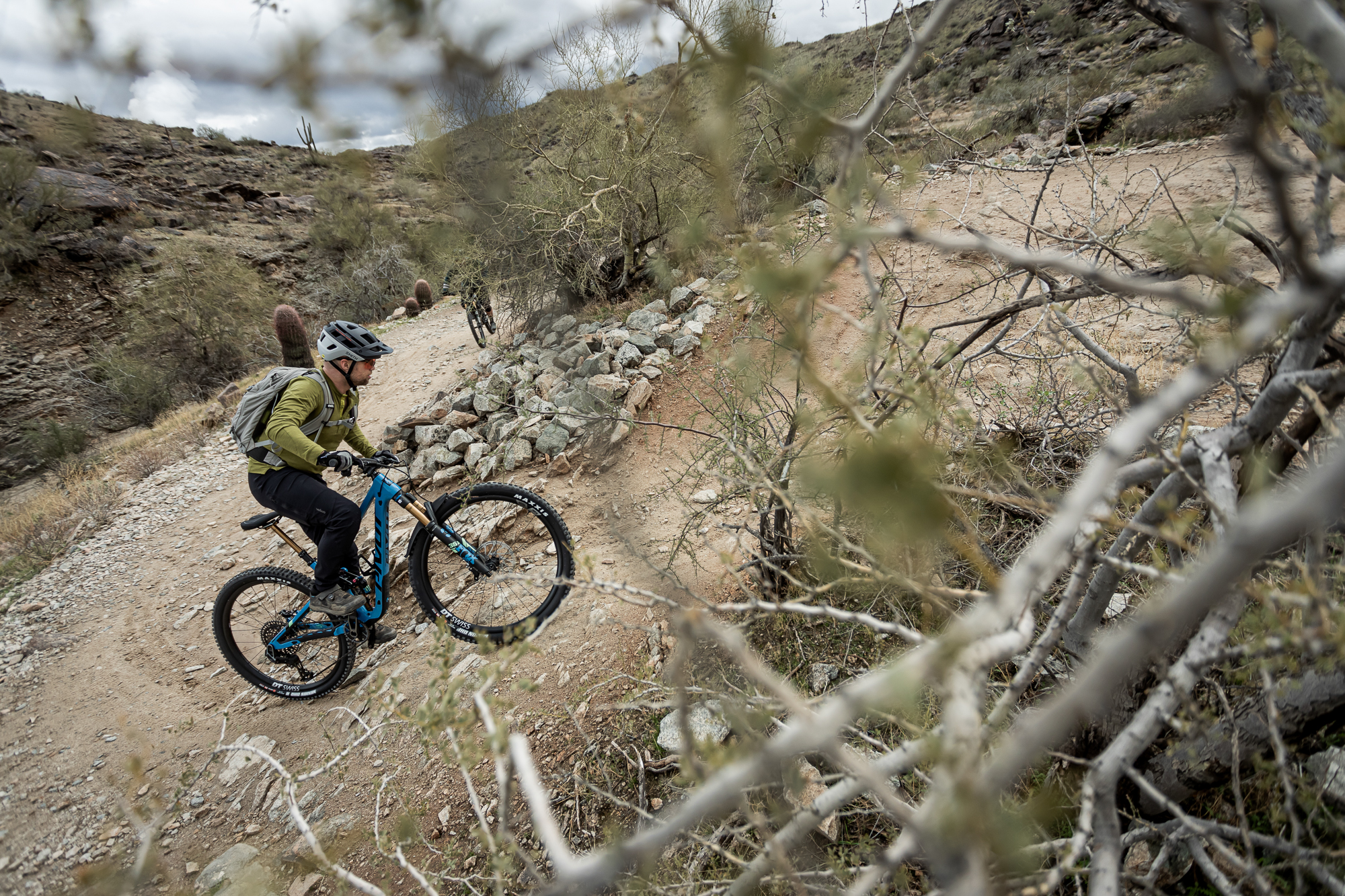
After a factory tour attempted to delay the inevitable, we set off for our first ride straight from Pivot’s headquarters in Tempe to their local testing grounds – South Mountain. The skies looked promising, and as we pedaled our way up the mountain, I was able to start focusing on the bike. Air down the tires. Check the suspension. Adjust saddle position.
From my first impressions (which in typical Pivot fashion, came before we were told anything about the new bike), the seat tube angle felt noticeably steeper than the prior version. It turns out that it’s 1º steeper, but to me it feels like more. To me, the size medium STA feels steeper than the Yeti SB120 that I’ve been riding, but both have an effective STA of 76.5º on paper. For me, the STA is plenty steep but I’m also on the small side of a medium frame, meaning my effective seat tube angle will be steeper than someone riding a medium with the post extended further.

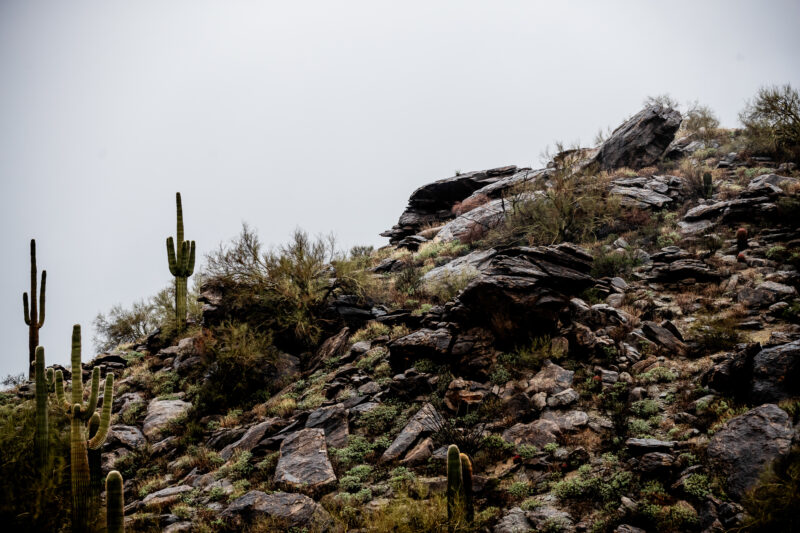
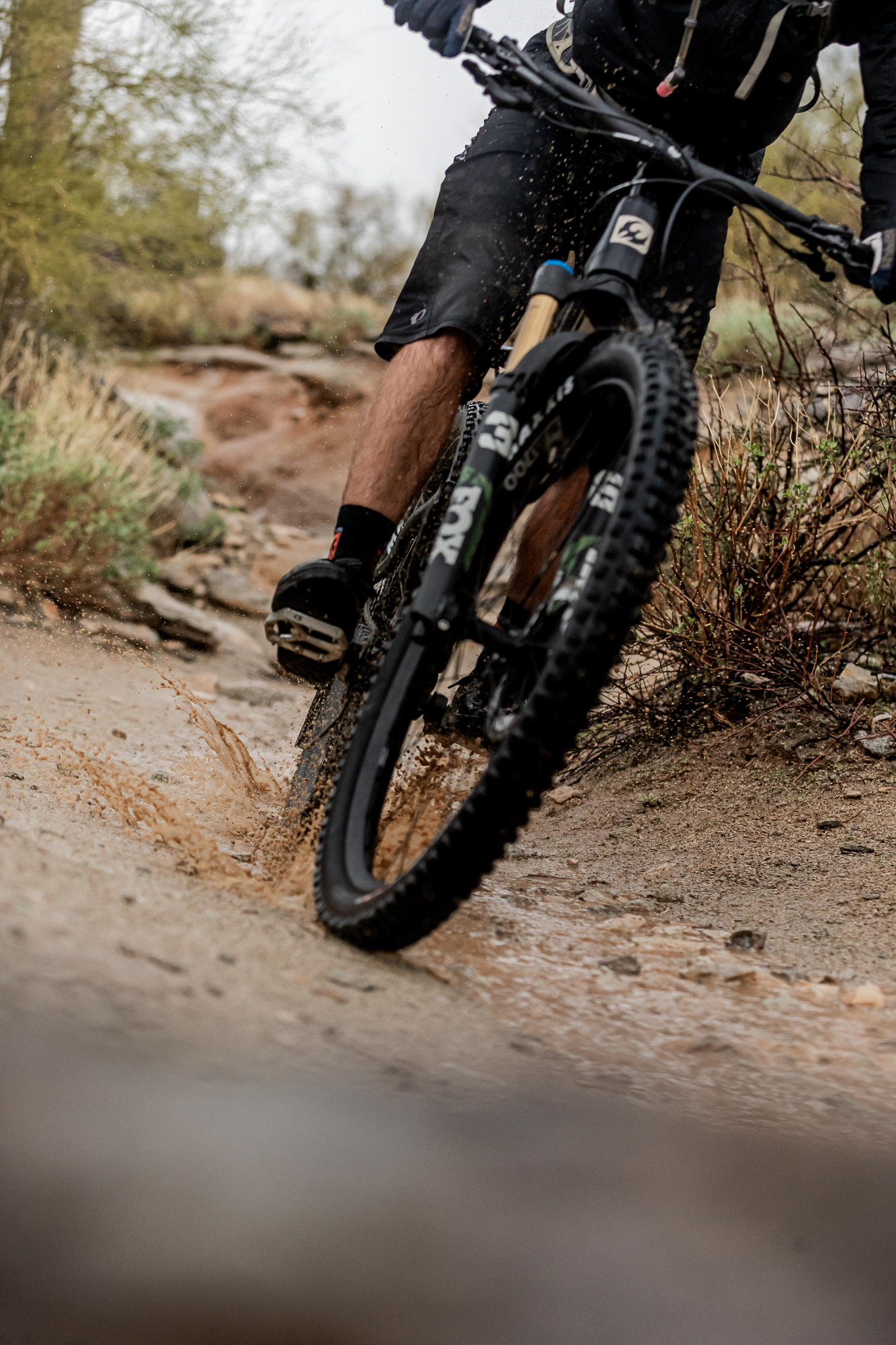
Before long, I had things pretty well dialed and we had made solid progress up the climb. And that’s when the skies opened up. It was light at first. Then came and went, before opening up into a full deluge that transformed the trails into their own little rivers. Fortunately, the rocky & sandy trails are built to shrug off the occasional downpour, but it did provide us with quite an interesting descent.

All of a sudden, you could no longer see the trail in spots. It was just a string of puddles with no indication of how deep they could be. Having just ridden up the trail I had some idea of what to expect, but it was still an exercise in quick decision-making while squinting to see through the barrage of water.
The storm didn’t last all that long, but it helped create a lasting impression of the bike. In the moment, forced to resort to my lizard brain, there wasn’t time to think. In that situation on a completely new bike, it can go one of two ways – it can feel completely natural and comfortable, or it could be alien and unsure. The Switchblade was the former.
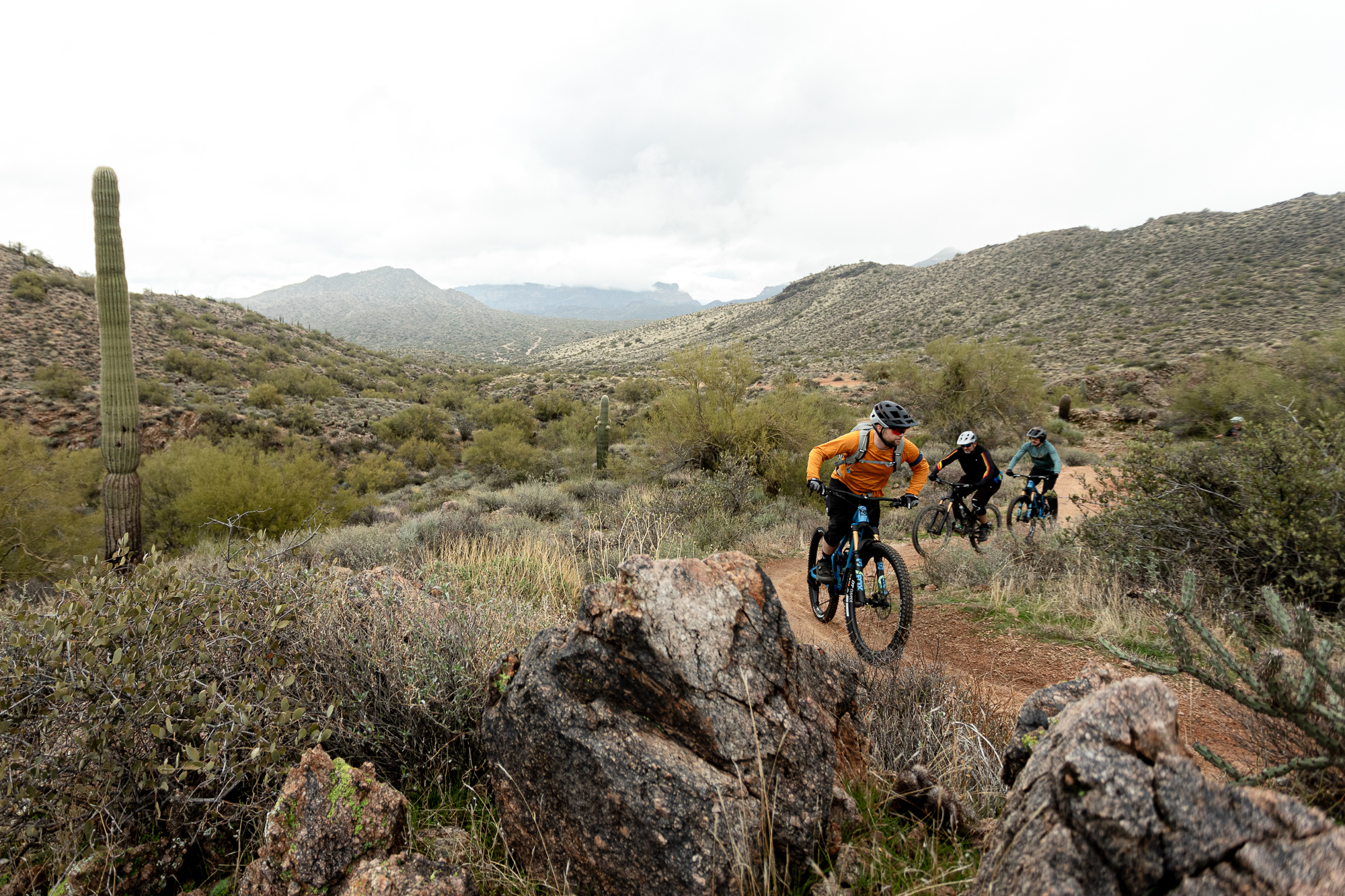
Fortunately, our second ride on the bike was in much better conditions. This time we headed out to the Hawes trail network for a day of true hero dirt. Easily the best dirt conditions I’ve ever experienced in the Phoenix area, the ride started off cool but finished nearly perfect with blue sky.
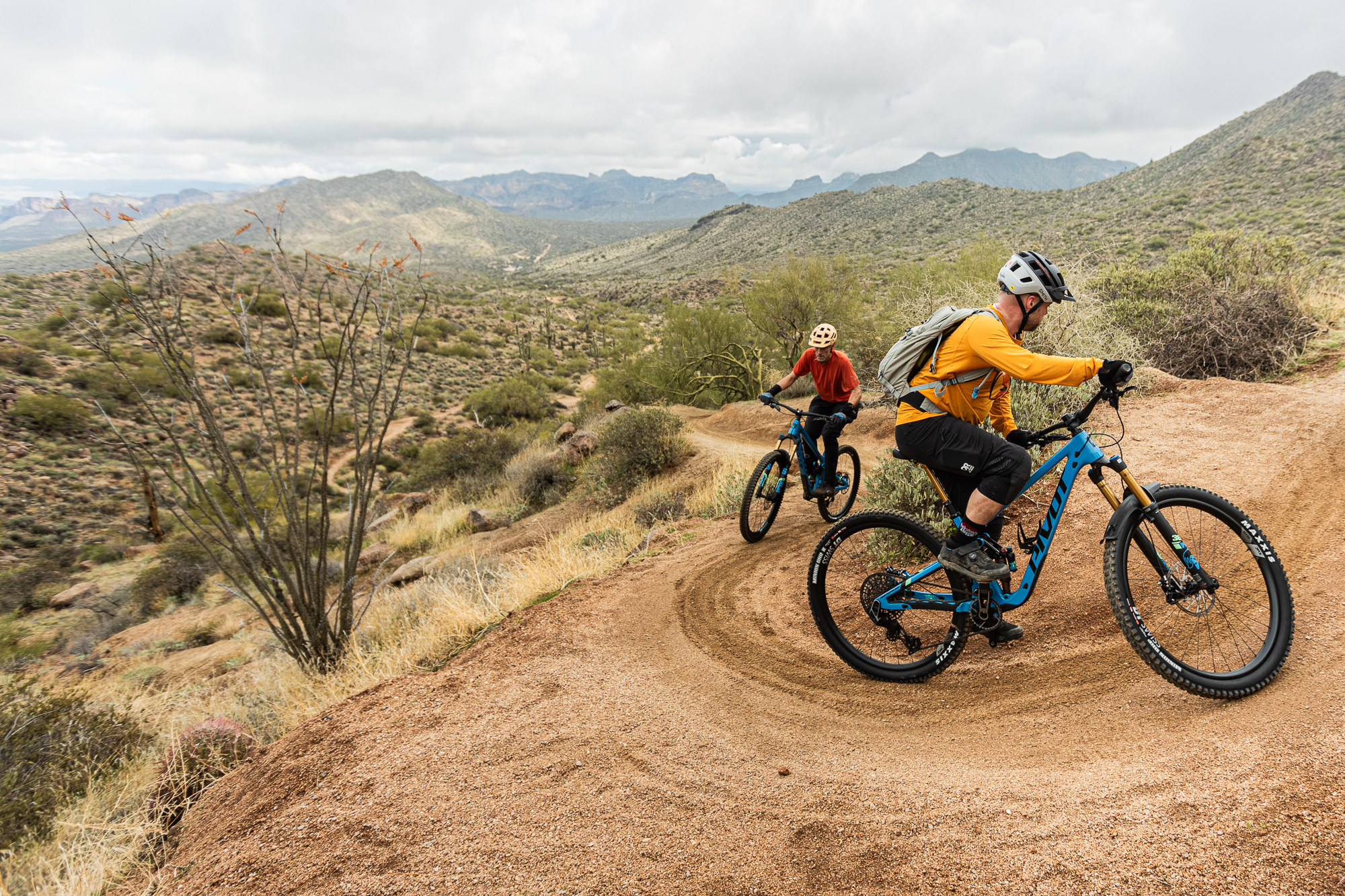
On this ride, thinking was no longer a luxury and I was able to focus on how the bike was performing. Most noteworthy to me was how well the Switchblade climbed up tight switchbacks. Riding in a group always includes a bit of yo-yoing, and that potential bunching can be tricky on a tight switchback. Even in those technical situations, the Switchblade is incredibly poised.
Going slow or fast up the climbs, it didn’t seem to matter. The front wheel seemed unflappable, and the rear wheel really did seem to ‘dig’ into the terrain, propelling you forward. More than once I got into a situation where I felt a dab was inevitable, only to pedal through and keep on going.
With a head tube angle of 65.7º, it’s only 0.3º slacker than the previous generation. But the reach has also increased by 15mm on the medium. The combination makes for a sharp handling bike that is still completely confident in awkward tech sections of trail. To me, the geometry strikes a solid balance for all-around mountain biking which is what the Switchblade is meant to be. This is supposed to be that one bike that you can head out for some XC missions one day, while hitting up the bike park the next.
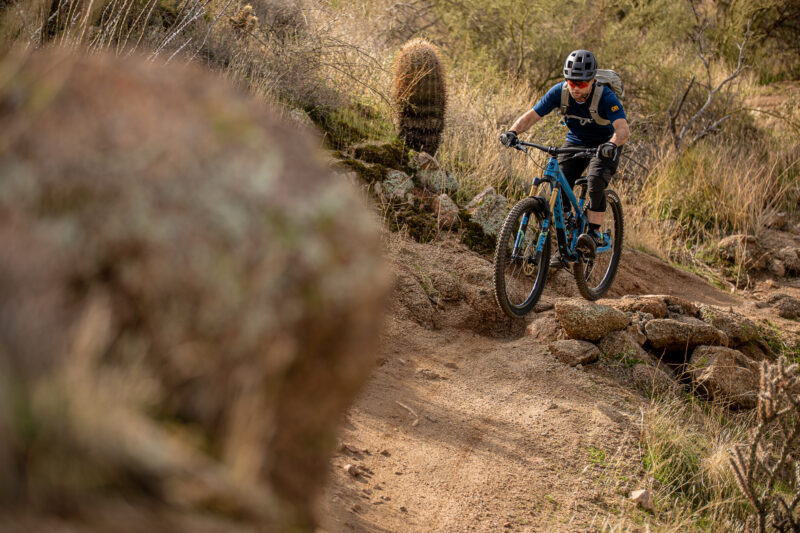
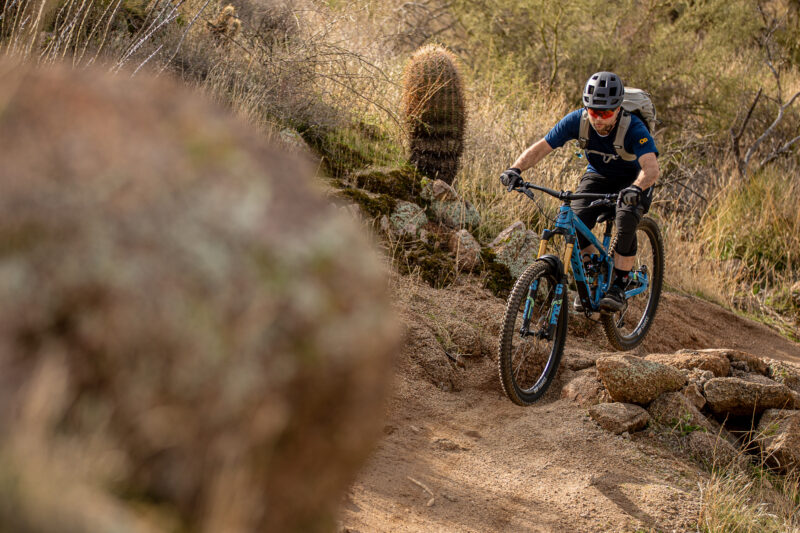
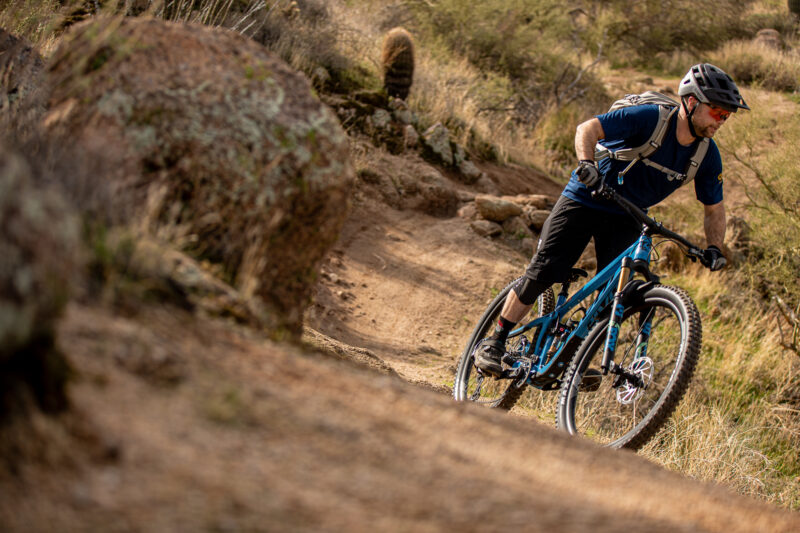
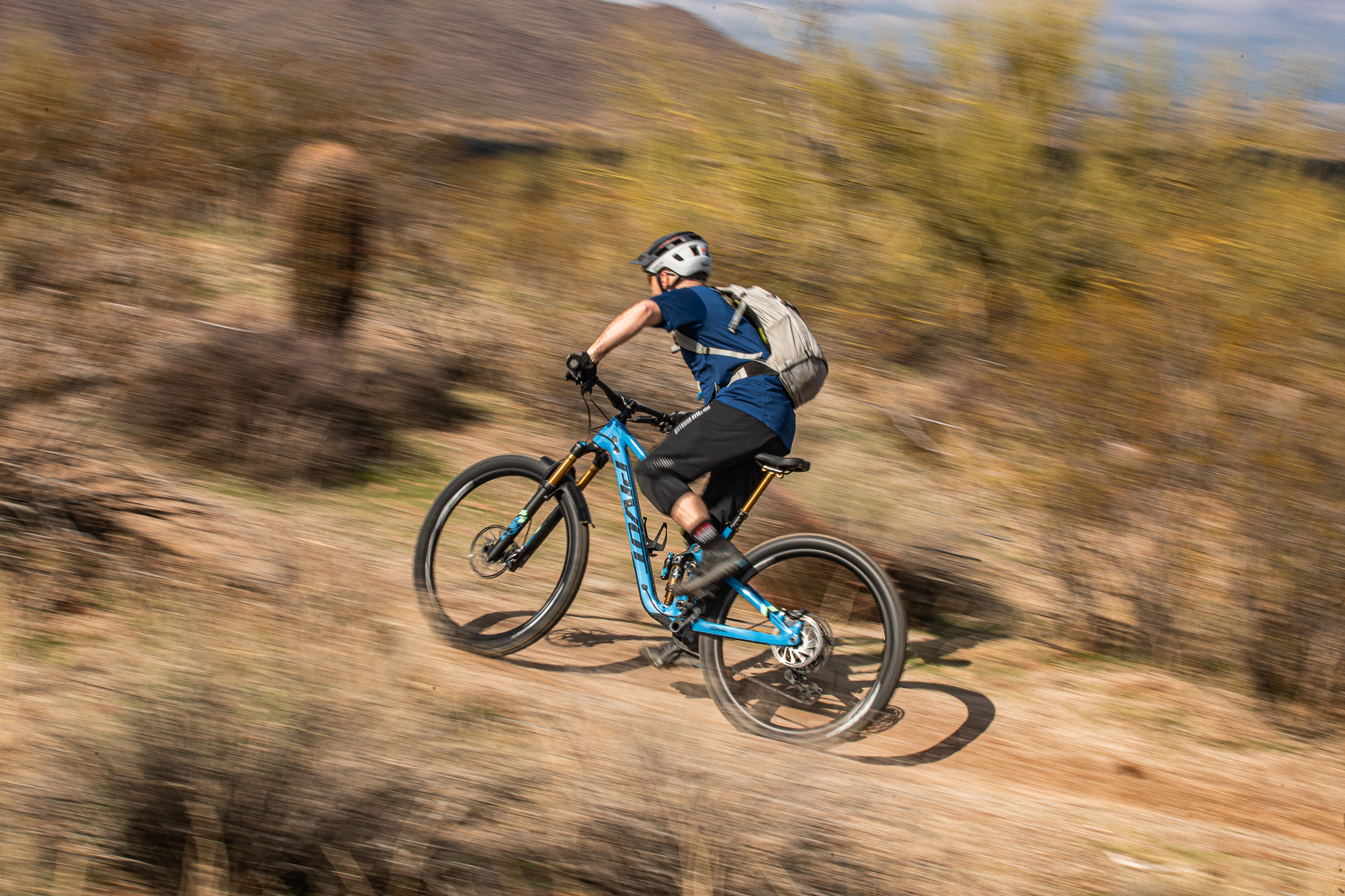
By the last few long descents of the day, I was feeling more confident on the newest Switchblade than any of the previous generations. Despite being stiff in all the right places with razor-sharp handling, the newest Switchblade is a bike that seems to be incredibly user-friendly.
At this point, I’ve ridden all of the past Switchblades, and there is no question that this is the best yet. Fans of internal storage will be disappointed, but the Pivot Dock System does give you an additional spot to stash your tools. On the plus side, the frame will fit a large water bottle easily, and without a special cage.
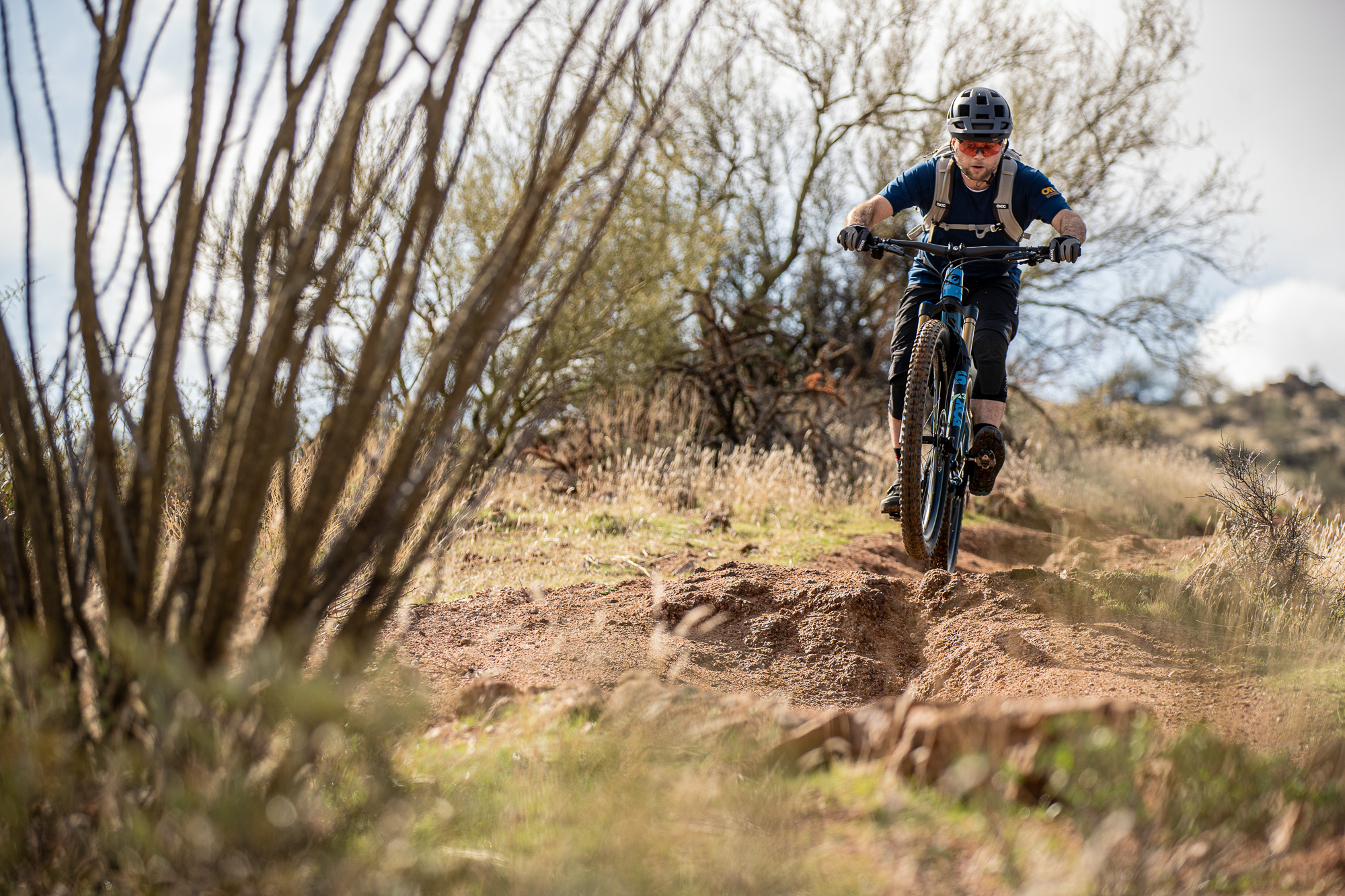
Ultimately, the new Switchblade isn’t a huge departure from the version released in 2020, but it has the right updates to keep it competitive. It might not be enough of a change to tempt current Switchblade owners to upgrade, but those who do are surely getting a better bike.
